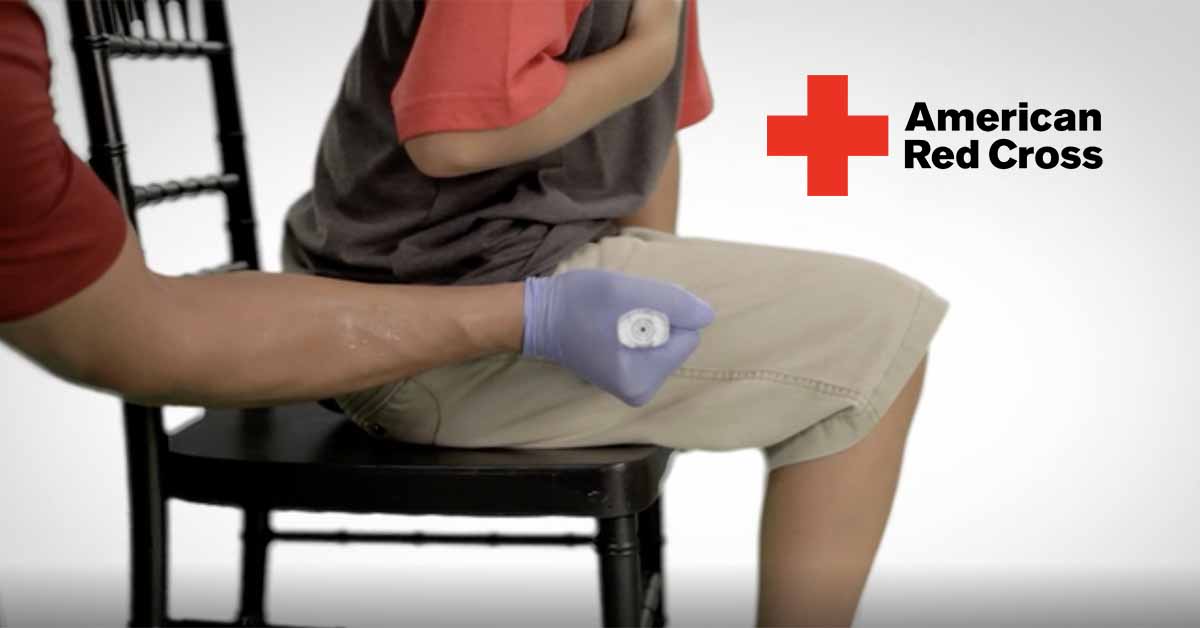Anaphylaxis is a serious, life-threatening reaction to a food, drug, substance (like latex), or insect bite. Knowing the signs and symptoms of anaphylaxis and how to properly respond can mean the difference between life and death.
For someone with a serious food allergy, that means talking to your doctor and having them detail what symptoms to look for, how to operate the epinephrine auto-injector they have prescribed, and what to do after epinephrine has been administered.
For others — parents, grandparents, friends, babysitters, caregivers, teachers, restaurant workers, etc — one alternative to consider is enrolling in a training course.
Having never taken anaphylaxis training other than that provided by our daughter’s allergist and from my own reading, I opted for the online Anaphylaxis and Epinephrine Auto-Injector course offered by the American Red Cross (ARC) with an eye toward seeing how well it addressed the issues I thought important. The course is offered on the ARC website for $22 for which I paid by credit card.
The training takes about 20-30 minutes to complete and is divided into the following sections:
- Part 1 — Introduction
- Part 2 — What is anaphylaxis?
- Definition
- Signs and Symptoms
- Would You Recognize Anaphylaxis?
- Check Your Understanding
- Part 3 — Symptoms
- The Three Cs: Check, Call, Care
- Using an Epinephrine Auto-Injector
- Time for Action
- Check Your Understanding
- Part 4 — How to Help
- Part 5 — Learning Assessment
Part 1 provides a short introductory video, parts 2-4 provide a series of short videos followed by quizzes to gauge your understanding, and Part 5 is a final test to see how well you retain the information. Score 80% or better on the test and you can claim a certificate of completion for the course to print locally and you can take the test as many times as you like until you pass.
Though the course was reasonably comprehensive, there were a number of issues I wish they had addressed differently:
- The criteria they use for determining whether an allergic reaction rises to the level of anaphylaxis differs from that advocated by FARE or the American Academy of Pediatrics. I prefer the criteria developed by the experts —FARE and the AAP— over the criteria provided by the course;
- They assume the patient is carrying an auto-injector but make no mention of stock epinephrine auto-injectors that may be available at schools and other venues;
- They assert that you should not administer an epinephrine auto-injector if it has expired, but a recently expired auto-injector is better than no auto-injector at all;
- They only provide instructions for the administration of the EpiPen brand of auto-injector. Instructions for other alternatives should have been included. (You can find them here.)
- They use older instructions stating that an EpiPen should be held against the thigh for 10 seconds during administration. Current instructions for EpiPen state 3 seconds.
The course is rudimentary, providing a very basic understanding of anaphylaxis and how and when to administer an epinephrine auto-injector. That said, it touched on the majority of issues I would want a caretaker of my child with food allergies to understand when followed by the corrections/additions I describe above.
If you would like to take the course, the American Red Cross is offering readers of SnackSafely.com a 20% discount from the $22 list price by using code BGCS0621 at checkout. The code is valid through May 2021.
Important note: This is not an endorsement for the training; please use your own judgement when deciding whether to take this course. SnackSafely.com has not and will not receive compensation from the American Red Cross or any other entity in exchange for this review, referrals from this site, or discounts provided by the ARC.





